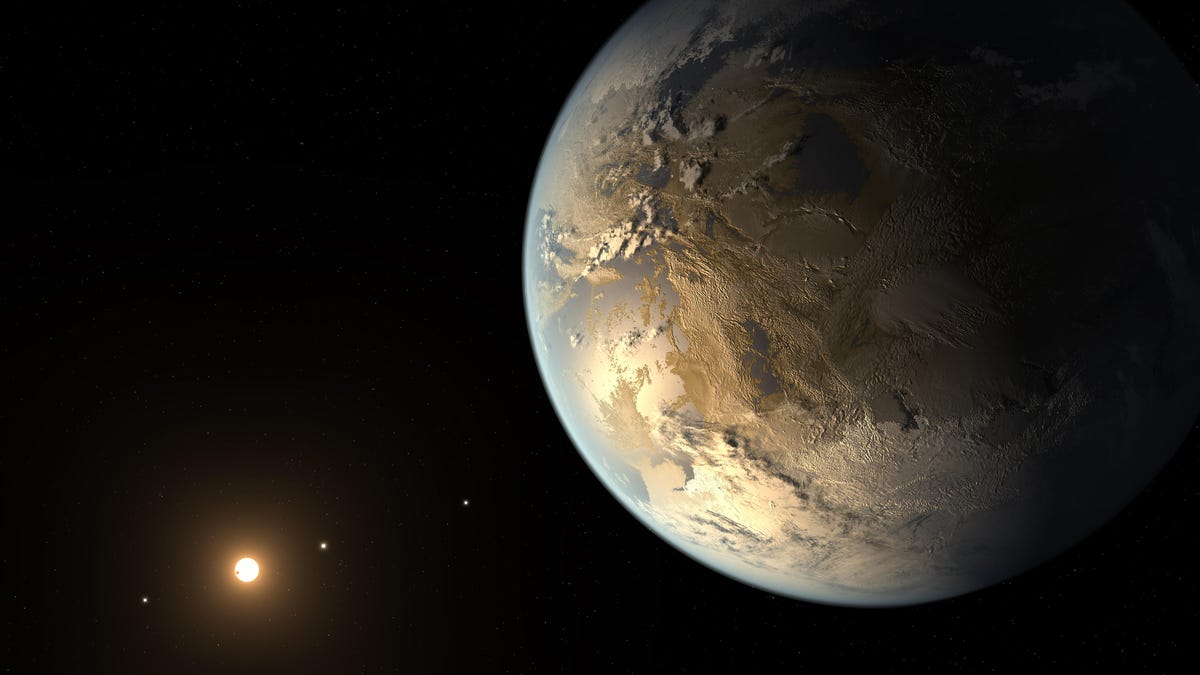Two Earth-like exoplanets now even better spots to look for life
Two of the earliest Earth-ish exoplanet finds are now more exciting targets in the search for habitable worlds beyond this rock.

Kepler 186f was one of the first Earth-size, potentially habitable exoplanets ever discovered.
Kepler 186f ignited the imaginations of space nerds everywhere four years ago when NASA announced it as the first potentially habitable, Earth-size planet confirmed beyond our solar system. A new study indicates the exoplanet 500 light-years away may also have seasons and a climate similar to our own.
So far scientists believe they know Kepler 186f orbits in the so-called goldilocks zone around a dwarf star in the direction of the constellation Cygnus. That means temperatures are right for water to pool on the surface. The planet's size and mass also indicate it has a rocky surface like that of our planet.
Now, new research out of Georgia Tech University has analyzed the planet's spin and axial tilt and found that its tilt is stable like Earth's, which makes it likely Kepler 186f also has regular seasons and a stable climate.
This is no trivial thing when it comes to determining how friendly a planet might be to the development of life. As study co-author and Georgia Tech Assistant Professor Gongjie Li explains, large fluctuations in Mars' tilt could be part of why it dried up into the barren world it is today.
Over the eons, Mars has had an unstable tilt that varies by as much as 60 degrees. "That instability probably contributed to the decay of the Martian atmosphere and the evaporation of surface water," Li said in a statement. The research was published in the The Astronomical Journal in May, but Georgia Tech shared more information on it this week.
The team says Kepler 62f, a slightly more distant but potentially habitable exoplanet, also has a stable tilt.
Earth's tilt is stabilized in part by other planets and our single large moon, something Mars lacks. It's not yet clear what's helping to keep the tilt of the two exoplanets steady, or if they even require any assistance.
"We don't know whether they possess moons, but our calculations show that even without satellites, the spin axes of Kepler-186f and 62f would have remained constant over tens of millions of years," Li explains.
There's still not enough information to say for sure that either planet has liquid water or life, but as the years go on, both seem to become more worthy of a closer look.
Just when we'll get that follow-up glance is a bit up in the air at the moment. NASA's next-generation observatory, the James Webb Space Telescope, is running a few years behind schedule and its launch date keeps slipping. It's currently set to blast off in early 2021, so we may begin to get a better idea of what a sunset on Kepler 186f really looks like within five years.
A Kepler-186f sunset likely appears dimmer, but the sun is larger.
Crowd Control: A crowdsourced science fiction novel written by CNET readers.
Solving for XX: The tech industry seeks to overcome outdated ideas about "women in tech."

